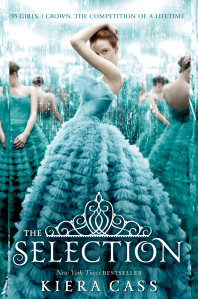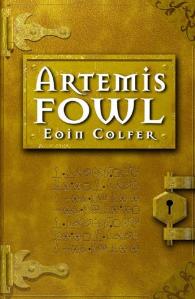Love comes in many forms, be it romantic, affectionate, friendly, or unconditional. It can be overpowering or underwhelming, unexpected or sweeping, awkward or harmonious, melodramatic or hilarious. First loves are filled with embarrassment, flushed cheeks, and heartbreak; romantic loves are ripe with electricity, passion, and steadfast commitment. All of it deserves to be celebrated and embraced—what better way than through books?
This list includes some of my personal favorite love stories, broken down by genre to help you find your perfect literary date: each romantic adventure (or misadventure) has a thing or two to say about the nature of love, in all of its forms. Happy Valentine’s Day, and happy reading!
Love lost and found: Contemporary romances

The Night Circus by Erin Morgenstern
Behind the scenes of a mysterious circus, two dueling magicians battle to prove their skill…but end up falling in love along the way. What happens when their relationship threatens those around them? A beautifully written, enchanting read from beginning to end.
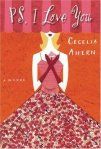 P.S. I Love You by Cecelia Ahern
P.S. I Love You by Cecelia Ahern
You probably saw the movie—or at least the trailer. After the death of her husband Gerry, Holly is devastated and finding it hard to move on with her life. But on her 30th birthday, she gets a bundle of letters from Gerry, one for each month after his death, all signed “P.S. I love you”. Equal parts romantic and heartbreaking.
 Water For Elephants by Sara Gruen
Water For Elephants by Sara Gruen
Set during the Great Depression, a young man stumbles upon a traveling circus when he jumps on their train. Schooled as a doctor, he becomes the circus veterinarian and falls into a circle of odd entertainers—among them a star animal tamer, Marlena. Written with superb detail mixed with historical research, this book is an experience as sublime as a circus act.
 A Walk To Remember by Nicholas Sparks
A Walk To Remember by Nicholas Sparks
Yes, I know: objectively, it’s nothing special. It’s your basic Good-Christian-Girl-changes-Local-Bad-Boy-for-the-better romance, but there’s also stars and wind set across a charming 1950s backdrop. Even though, at the end of the day, it’s just another sappy paperback Sparks romance, this early novel stands out amongst his melodramatic oeuvre for its prose and bittersweet conclusion.
 Memoirs of a Geisha by Arthur Golden
Memoirs of a Geisha by Arthur Golden
Set in early 20th century Japan, this story follows the life of Nitta Sayuri, who is taken from her poor fishing village and sold into slavery at a geisha house. As she grows up, she learns the art of the Japanese geisha—dance and music, tea ceremony, elaborate kimonos coupled with hair and makeup—and becomes one of the most sought-after geishas. Despite being in a profession where virginity is auctioned off to the highest bidder and profit is made from pitting jealous men into rivalries, Sayuri finds herself falling in love with a customer. This book is rich with historical detail, and is equal parts romantic, erotic, and suspenseful as it explores the lives and politics within the geisha house.
I ❤ U: Unconventional romantic reads

The Lover’s Dictionary by David Levithan
I couldn’t put together this list without including this book. Constructed as a series of dictionary entries, the book unfolds as a non-chronological telling of a couple falling in love, painting the highs and lows of relationships and the quiet moments in-between. Abstract and lyrical, this quick read will make you melt at Levithan’s poetically crafted prose.
(Braggy side note: Levithan signed my copy “To Ashleigh—With many words about love” inside a heart. Needless to say, I’m never selling this book.)

Belle de Jour: Diary of an Unlikely Call Girl by Anonymous
A memoir about a London call girl’s adventures hardly qualifies as romantic—but oof, is it a steamy read. If you enjoy the book, check out the Billie Piper television series (“Secret Diary of a Call Girl”).
 The Boy Next Door by Meg Cabot
The Boy Next Door by Meg Cabot
Told entirely through email correspondence, this is a fun read about a gossip columnist and a crime reporter from rival newspapers meeting and falling in love under unusual circumstances. If you enjoy this read, pick up Rainbow Rowell’s Attachments, or really anything else by Cabot (special shoutouts to The Mediator series, Size 12 Is Not Fat, Boy Meets Girl, Every Boy’s Got One, and All-American Girl.)
 Love, Rosie by Cecelia Ahern
Love, Rosie by Cecelia Ahern
Similar to The Boy Next Door, this book is told through emails, letters, and notes, chronicling a series of missed opportunities between two friends, Rosie and Alex. As they date, marry, have children, divorce, and grow old, the two stay close…and find that fate isn’t quite done with them. A charming page-turner.
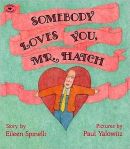 Somebody Loves You, Mr. Hatch by Eileen Spinelli
Somebody Loves You, Mr. Hatch by Eileen Spinelli
Mr. Hatch has a usual, solitary routine—until one day he gets a Valentine in the mail, with a note “Somebody Loves You”. A bittersweet children’s book about giving and receiving love.
First loves: Young adult romance
 Will Grayson, Will Grayson by John Green and David Levithan
Will Grayson, Will Grayson by John Green and David Levithan
Move over, The Fault in Our Stars: this tops my list as John Green’s best book. I can guarantee that no one else will agree with me on this point, but I stand my ground. The narrative flip-flops between two boys, both named Will Grayson, as they come of age and fall in love. The common thread between them is Tiny, “the world’s largest person who is really, really gay” and “the world’s gayest person who is really, really large”. Features a wonderful representation of gay romance without falling into stereotypical characterizations or plotting.
 Avalon High by Meg Cabot
Avalon High by Meg Cabot
King Arthur characters reincarnated as high school students. Need I say more?
 Fangirl by Rainbow Rowell
Fangirl by Rainbow Rowell
There aren’t enough stories about teenagers transitioning from high school to college, and I’m overjoyed Rowell took that chance. While many people prefer Rowell’s Eleanor & Park, Fangirl is my favorite of Rowell’s books; the perfect love note to fanfiction writers and readers everywhere.
 Anna and the French Kiss by Stephanie Perkins
Anna and the French Kiss by Stephanie Perkins
What can I say? This is young adult fluff at it’s best. Our protagonist, Anna, is sent off to boarding school in Paris, where she meets the charming (and taken) Etienne St. Clair. A quick read, nothing comes as a shock…but that doesn’t make it any less run to read.
 The Truth About Forever by Sarah Dessen
The Truth About Forever by Sarah Dessen
Macy is a teenager dealing with the sudden loss of her father. When her boyfriend goes away to Brain Camp for the summer, she thinks they can make it work—but he ends up breaking up with her over email (ouch). Feeling lost and alone, Macy finds herself working for Wish Catering for the summer, where she meets a boy named Wes.
Dessen is royalty in the young adult world, and it was hard to pick just one of her books to include on this list. If you enjoy The Truth About Forever, I also recommend Someone Like You, This Lullaby, and Just Listen.
Love never dies: Romantic classics
 Pride and Prejudice by Jane Austen
Pride and Prejudice by Jane Austen
The quintessential will-they-won’t-they Austen romance. Lizzie Bennet is a heroine to root for, and Mr. Darcy is just about as swoon-worthy as they come…once you warm up to him.
If you’ve already read this one approximately one billion times, there are also quite a few modern interpretations (sometimes serious, sometimes silly). My personal favorites are Enthusiasm by Polly Shulman and Pride and Prejudice and Zombies by Seth Grahame-Smith.
 The Princess Bride by William Goldman
The Princess Bride by William Goldman
Want to read about pirates, princesses, witches, miracles, sword fights, rodents of unusual size, and true love? As you wish. The book that inspired the film is filled with even more adventure to bring the star-crossed Westley and Buttercup together in a fairy tale fashion. Told as a fable, this fantasy romance is inconceivably charming.
 Tuck Everlasting by Natalie Babbitt
Tuck Everlasting by Natalie Babbitt
While romance isn’t necessarily the main point of this classic, it still shines enough to include it on this list. Winnie Foster comes across the Tuck family who, after drinking from a stream, have become immortal. It doesn’t take long for Winnie to fall for Jesse Tuck…but she has to chose between immortality and moving on. It’s what Twilight wishes it was, with much more whimsy and much less angst.
 Shakespeare’s Sonnets by William Shakespeare
Shakespeare’s Sonnets by William Shakespeare
I always get so angry when I see Romeo and Juliet listed as one of the greatest romances of all time because…we all know that everyone dies, right? No one is happy. Everything about their relationship is toxic and problematic. I’m personally a bigger fan of the romantic comedies (Much Ado About Nothing, The Taming of the Shrew, Twelfth Night) which I also suggest.
Even more often overlooked is his collection of sonnets. The best part: the first time you read them, they sound romantic. The deeper you read, the more you realize that Billy was writing a bunch of sleazy pick-up lines. Interrupt as you like. (My personal favorites include sonnets 18, 19, 55, and 116.)
 Cyrano de Bergerac by Edmond Rostand
Cyrano de Bergerac by Edmond Rostand
I think it’s safe to say that this is my favorite classic play. Cyrano de Bergerac brilliant and witty cadet with an extremely large nose; Christian de Neuvillette is a handsome new cadet who hasn’t a clue how to think on his own. They both fall in love with the beautiful Roxane. Cyrano, afraid that she will reject him for being ugly, works with Christian to win her heart by sending her love letters signed as Christian. The play strikes a beautiful balance between humor and drama—best enjoyed as a staged performance, if it’s around.
Make my heart go doki-doki: Manga and graphic novels
 Mad Love by Paul Dini and Bruce Timm
Mad Love by Paul Dini and Bruce Timm
From the minds behind “Batman: The Animated Series” comes the Eisner-winning origin story of Harley Quinn, the Joker’s sidekick and main squeeze. Before her life of crime, Arkham Asylum psychologist Harleen Quinzel always had a fascination with the criminally insane, and found herself drawn to the Joker. The resulting relationship is one based on manipulation, abuse, and insanity.
 The One I Love by CLAMP
The One I Love by CLAMP
This collection of vignettes focuses on different stages of love: from love at first sight and marriage, to long distance relationships and Valentine’s Day. CLAMP’s illustrations are as beautiful as ever, complementing the short and sweet storytelling. A lovely read for romantics everywhere.
 Pretty Guardian Sailor Moon series by Naoko Takeuchi
Pretty Guardian Sailor Moon series by Naoko Takeuchi
It’s the original “miracle romance”! Usagi is just your average clumsy crybaby, until she discovers that she is the defender of love and justice, Sailor Moon. Featuring a reincarnated Moon Princess and a mysterious man named Tuxedo Mask, this groundbreaking series not only tells a wonderful love story, but also celebrates female friendship through Usagi’s fellow Sailor Scouts.
 Scott Pilgrim series by Bryan Lee O’Malley
Scott Pilgrim series by Bryan Lee O’Malley
Want more fighting and video game references in your love stories? Scott Pilgrim is the way to go. In order to date Ramona Flowers, the (literal) girl of his dreams, Scott Pilgrim must defeat her seven evil exes. Though Ramona falls somewhat into the Manic Pixie Dream Girl stereotype, O’Malley’s work is fast-paced and downright fun, filled with plenty of in-jokes to keep any nerd happy.
 Ouran High School Host Club by Bisco Hatori
Ouran High School Host Club by Bisco Hatori
Haruhi Fujioka is new to Ouran Academy, an elite high school filled with rich students with too much time on their hands. A scholarship student, Haruhi wanders the massive halls in search of a quiet place to study—and stumbles across the Ouran Host Club. What follows, you have to see for yourself. Filled with self-aware tropes and intriguing gender politics, this is shojo manga at its finest (and funniest).
Don’t see your favorite love story here? Send them my way in the comments!

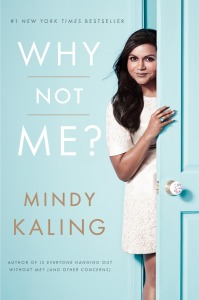 Why Not Me? by Mindy Kaling
Why Not Me? by Mindy Kaling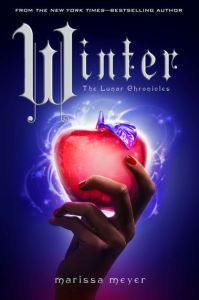 Winter by Marissa Meyer
Winter by Marissa Meyer My True Love Gave to Me: Twelve Holiday Stories edited by Stephanie Perkins
My True Love Gave to Me: Twelve Holiday Stories edited by Stephanie Perkins You Deserve a Drink by Mamrie Hart
You Deserve a Drink by Mamrie Hart Sweet Baby Jesus! by Caroline Praderio
Sweet Baby Jesus! by Caroline Praderio
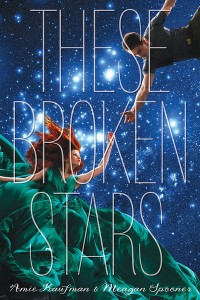
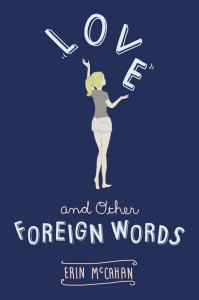

 P.S. I Love You by Cecelia Ahern
P.S. I Love You by Cecelia Ahern Water For Elephants by Sara Gruen
Water For Elephants by Sara Gruen A Walk To Remember by Nicholas Sparks
A Walk To Remember by Nicholas Sparks Memoirs of a Geisha by Arthur Golden
Memoirs of a Geisha by Arthur Golden


 Love, Rosie by Cecelia Ahern
Love, Rosie by Cecelia Ahern
 Will Grayson, Will Grayson by John Green and David Levithan
Will Grayson, Will Grayson by John Green and David Levithan Avalon High by Meg Cabot
Avalon High by Meg Cabot

 The Truth About Forever by Sarah Dessen
The Truth About Forever by Sarah Dessen Pride and Prejudice by Jane Austen
Pride and Prejudice by Jane Austen The Princess Bride by William Goldman
The Princess Bride by William Goldman Tuck Everlasting by Natalie Babbitt
Tuck Everlasting by Natalie Babbitt Shakespeare’s Sonnets by William Shakespeare
Shakespeare’s Sonnets by William Shakespeare Cyrano de Bergerac by Edmond Rostand
Cyrano de Bergerac by Edmond Rostand Mad Love by Paul Dini and Bruce Timm
Mad Love by Paul Dini and Bruce Timm The One I Love by CLAMP
The One I Love by CLAMP Pretty Guardian Sailor Moon series by Naoko Takeuchi
Pretty Guardian Sailor Moon series by Naoko Takeuchi Scott Pilgrim series by Bryan Lee O’Malley
Scott Pilgrim series by Bryan Lee O’Malley Ouran High School Host Club by Bisco Hatori
Ouran High School Host Club by Bisco Hatori
